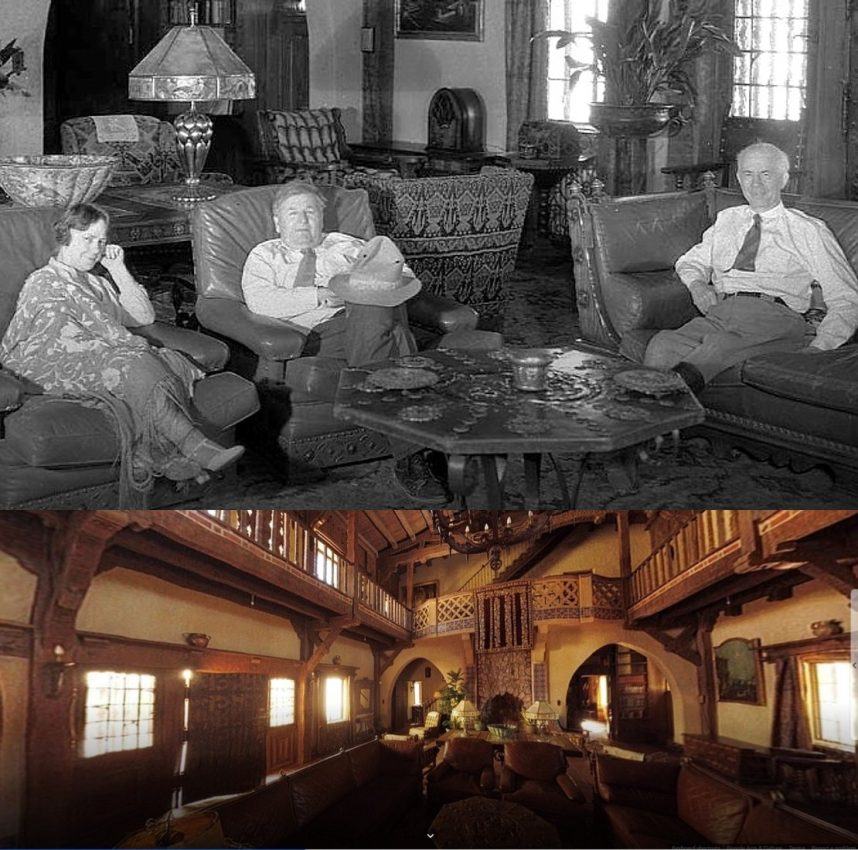Published on: December 16, 2024, 08:12h.
Last updated on: December 15, 2024, 01:39h.
In the desert three hours northwest of Las Vegas stands a castle built by 1920s gold baron Walter Scott atop the gold mine that funded it. Except that nearly every word you just read is a lie.

Death Valley Ranch, almost universally called “Scotty’s Castle,” was built by Albert Johnson, a millionaire insurance broker from Chicago.

But you can be forgiven for believing the lie, because it was perpetuated by both Scott and Johnson themselves.
Scott, a horseman from Kentucky who once worked as a rough rider in Buffalo Bill’s Wild West show, was good at many things.
Lying like a dog was one of them.
Historian Richard Lingenfelter once described Scott as “a conscienceless con man, an almost pathological liar and a charismatic bullslinger” who was “willing to say or do anything for one more moment in the limelight.”
In fact, the only reason Johnson built “Scotty’s Castle” in the first place was because Scott had lied to him, convincing him to buy 1,500 acres in the middle of the hottest place on Earth based on false promises of a mine on the property that overflowed with gold.
By the way, it’s also not a castle — just a nice Spanish Colonial Revival villa with a couple of turrets.
Once Johnson and his wife, Bessie, got to Death Valley and realized they were duped, she made the best of the situation. Albert had health problems, stemming from an 1899 train accident, that Bessie felt the desert air would help anyway.
So she convinced him to use their virtually worthless new land to build a dream winter getaway.

In 1922, they started out with a horse ranch, with living quarters for the couple and the 30 people (mostly Shoshone Indians) they hired to construct and run it. And even then, it drew national attention for its opulence.
The March 1926 issue of Sunset magazine noted that “Scotty is building a plant to generate electricity by the use of power that comes from spring water flowing from higher ground.”
That wasn’t a typo you just read. Though initially pissed about being had, Johnson remained fascinated by the colorful Scott and forgave him. When the magazine’s reporter called, the reconciled buddies convinced him that Scott was the owner and builder, while Johnson described himself as “only [Scott’s] banker.”
The ruse fulfilled both Scott’s need for attention and Johnson’s desire for privacy, and is how the legend of “Scotty’s Castle” was born.
In 1926, the Johnsons decided to upgrade to the $1.4 million mansion ($18.7 million today) that still occupies the land today.
Castle Falls
But the stock market crash of 1929 had other plans. It robbed almost all millionaires, including Johnson, of around half their wealth overnight. Johnson’s insurance company, National Life, went bankrupt the following year.
Though construction on the mansion was already finished, several other structures in various stages of completion were abandoned, including a lavish pool. (The tiles intended for it are still stacked in tunnels beneath the castle.)

Something almost just as bad happened to the Johnsons three years later. That’s when President Herbert Hoover dedicated 2 million acres of government land to create Death Valley National Park, and the Johnsons discovered that this land included their own.
This was one of the only bad things that happened to the Johnsons in Death Valley that they couldn’t blame on Scott — at least not directly. The initial land survey conducted in the late 1800s turned out to be inaccurate. The Johnsons’ property started 6 miles farther up Grapevine Canyon.
While the Johnsons negotiated with Uncle Sam, Scott convinced them to rent out the rooms in their mansion to visitors, for as long as they could get away with it — a subject in which Scott was something of a Rhodes scholar.
Bittersweet Victory
In August 1935, the Johnsons finally got some good news. President Franklin Roosevelt signed a bill allowing them to officially buy all the land they thought they had already purchased. And they did, for $1,900 ($43,500 today).
But by then, however, they had retired to Hollywood, visiting Death Valley only occasionally. After Bessie died in a 1943 car accident, Albert stopped coming altogether. In failing health, he created a charity in 1947, leaving his property to the Gospel Foundation in his will. He died a year later.

Another provision in Johnson’s will stipulated that Scott be allowed to reside in “his” castle for the rest of his days. When he died in 1954, “Death Valley Scotty” was buried on a hill overlooking the estate.
In 1970, the National Park Service purchased it for $850K from the foundation.
Scotty’s Castle remained the top tourist destination in Death Valley National Park for decades. But an October 2015 flood necessitated the closure of all roads leading to it. Then, in 2021, a fire destroyed the visitor center.


